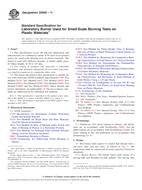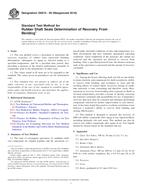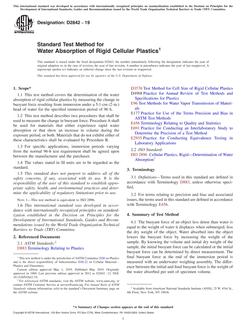1.1 This provisional specification defines the Open Systems Interconnection (ISO7498 : 1984) Layer 2 data link layer for dedicated short-range communication (DSRC) equipment operating in half-duplex mode.
1.1.1 This provisional specification defines the Data Link Layer irrespective of the physical medium to be used. However, it is expected that the standard will be used in accordance with a three layer stack as defined by Subcommittee E17.51 and IEEE P1455 and illustrated in . A critical implication of the use of the Data Link Layer standard with PS 111 is the assumption that the data rate will be 500 Kbps on both the uplink and downlink.
1.1.2 This provisional specification specifies dedicated short range communications between fixed equipment at the roadside, called a beacon or Road Side Equipment (RSE) and Mobile Equipment in vehicles, called a Transponder or On-Board Equipment (OBE). This standard does not address vehicle-to-vehicle communication or communication between different instances of RSE.
1.1.3 This provisional specification adheres to the general DSRC architecture in which the RSE controls the medium, allocating its use to OBEs within range of the RSE.
1.1.4 This provisional specification supports a variety of RSE configurations. It supports configurations where one RSE communicates with one OBE, as well as configurations where one RSE can communicate with several OBEs. It does not define any specific configuration or layout of the communication zone.
1.1.5 This provisional specification does not define to what extent different instances of RSE, operating in the vicinity of each other, need to be synchronised with each other.
1.1.6 This provisional specification defines parameters to be used in negotiation procedures taking place between RSE and OBE.
1.1.7 This provisional specification defines the following:
Medium access control (MAC) procedures for the shared physical medium,
Addressing rules and conventions,
Data flow control procedures,
Acknowledgement procedures,
Error control procedures,
Services provided to data link user(s), and
Fragmentation.
1.1.8 There are two primary MAC modes, synchronous and asynchronous. Both modes support time-division multiple access half-duplex communications combined with a slotted aloha protocol for activation. The synchronous mode is characterized by a contiguous set of slots which is transmitted continuously and has fixed polling, data communications and activation phases. The asynchronous mode can vary the transmission of polling sequences, activation attempts or data communications.
1.1.9 This provisional specification assumes that each RSE covers a limited part of the road (the communication zone) and that the OBE communicates with the RSE while passing through the communication zone.
1.1.10 This provisional specification specifies the services required of the data link layer by the DSRC data link layer user, as viewed from the data link layer user, to allow a data link layer user entity to exchange packets with remote peer data link layer user entities. The services do not imply any particular implementation or any exposed interface.
1.1.11 Not discussed in this provisional specification are signals that must be passed through the Data Link Layer from the Physical Layer to the Application Layer or vice versa in the OBE. These signals include indications of exceeding the wake-up threshold level (to control the OBE response in a small zone) and no carrier (to permit graceful shut down of the OBE if the OBE unexpectedly loses communications). It will be necessary to consider the implementation of these signals in OBE design.
1.2 Overview
1.2.1 All transmissions by either the RSE or OBE shall consist of a preamble and a frame. A preamble is an eight-bit sequence used for bit synchronization and is specified in Layer 1. A frame is a data link layer entity, which is the result of encapsulation of an application protocol data unit. The generic encapsulation process is shown in .
1.2.2 An APDU is delivered from the application layer to the data link layer. If the APDU cannot be sent in a single transmission, then it is subdivided into multiple packets. Each packet is then converted into an LPDU by appending a byte count, fragmentation and logical link control and status field to the beginning of each packet. The frame is then formed by appending a link address field, and media access control field to the beginning and a error detection check field to the end of each LPDU. Each frame is then sent to the physical layer, which appends the preamble and then transmits the data.
1.2.3 The frames can be transmitted in one of two modes: synchronous or asynchronous. In the synchronous mode, frames are transmitted in one of three types of slots: frame control message, message data or activation. The slots are combined to form a continuously repeated TDMA frame, as shown in . Each TDMA frame begins with a frame control message slot (FCMS). The FCMS only contains a frame control frame which is a broadcast message from the RSE indicating the number of slots, the type of each slot and the size of the slots that compose the rest of the TDMA frame. For example, in , the frame control frame defines a TDMA frame composed of three additional slots, two slots for data transmission and the other slot for activation. The message data slot (MDS) contains a data message frame transmitted over either the downlink to a specific OBE or uplink from a specific OBE. In addition, there is an acknowledgement transmitted immediately after the data message frame in the opposite direction. The activation slot (ACTS) consists of activation windows which are time periods when any OBE is allowed to transmit in contention with other OBEs in order to attempt to activate. It is not necessary to have an activation slot in a TDMA frame.
1.2.4 Assuming link establishment requires the transmission of a beacon service table (BST) from the RSE and negotiation of link parameters using a vehicle service table (VST), provides an example of a full link negotiation followed by a read/write operation in synchronous mode. (Note that the full link negotiation can be shortened to reduce the number of TDMA frames needed to complete a transaction.) In TDMA Frame #1, the OBE receives a BST from the RSE and decides to activate. The activation is also transmitted in TDMA Frame #1. In TDMA Frame #2, the frame control frame designates a downlink message data slot to obtain the VST. After the OBE transmits the VST in TDMA Frame #2, the RSE commands the OBE to support a read in TDMA Frame #3. In TDMA Frame #4, the frame control frame designates an uplink message data slot to read the data. In TDMA Frame #5, the frame control frame designates a downlink message data slot to write data to the OBE. A corresponding acknowledgement is transmitted by the OBE.
1.2.5 In the asynchronous mode, communications with an OBE is always initiated with a frame control frame which is regularly broadcast by the RSE. Immediately following the frame control frame are a series of activation windows. The timing and structure of the frame control frame and activation windows can be made common to both synchronous and asynchronous operations (to minimize the differences between the two modes). It is expected that the frame control frame and the activation windows will be transmitted (or time allocated) periodically so that the RSE can poll its read zone for OBEs. When an OBE successfully activates, the RSE discontinues transmissions of the frame control frame to establish private communications with the OBE. These communications can occur asynchronously, that is, without a TDMA frame dividing time into slots. In addition, the specific sequence of frames transmitted is dependent entirely on the application layer. Once the private communications is completed, the RSE would then continue to poll using the frame control frame and activation windows. Note that opportunities to transmit on the downlink and uplink in the asynchronous mode are defined by windows which provide constraints on the start and end times for any frame transmissions. An activation window is a special case of an uplink window.
1.2.6 As above, assuming link establishment requires the transmission of a beacon service table (BST) from the RSE and negotiation of link parameters using a vehicle service table (VST), provides an example of a typical read/write operation in asynchronous operation.
1.2.7 Like the synchronous mode, the OBE receives the BST from the RSE and attempts to activate. The activation frame is transmitted in activation windows that immediately follow the frame control frame. Once the activation is established, the RSE commands the OBE to transmit a VST and allocates an uplink window for the OBE to transmit the VST. After the VST is received, the RSE commands the OBE to support a read and allocates an uplink window for the OBE to transmit the read response. The OBE transmits the data. Then, the RSE writes data to the OBE and receives a reply that the write was successfully completed.
Note 1
Provisional Standards require only subcommittee consensus and are published for a limited time of two years. The provisional process was used because it is anticipated that the United States Department of Transportation will be referring to this provisional specification in their rule making.
Product Details
- Published:
- 12/28/1999
- Number of Pages:
- 27
- File Size:
- 1 file , 350 KB


